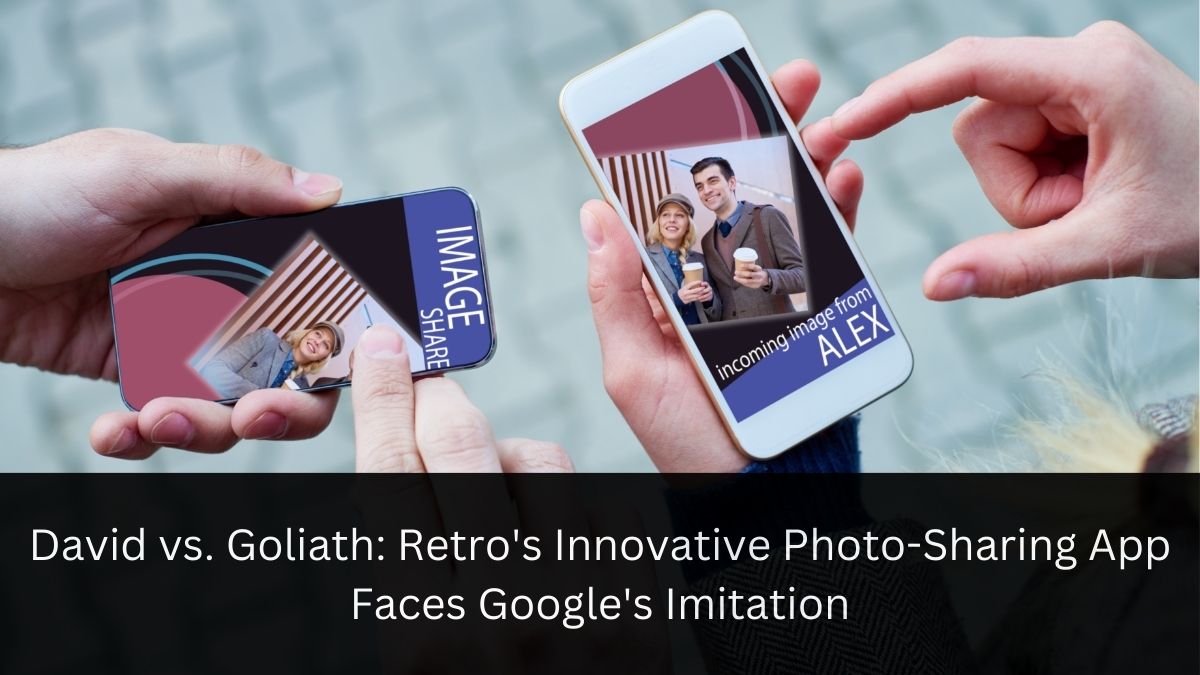Press Release
David vs. Goliath: Retro’s Innovative Photo-Sharing App Faces Google’s Imitation

In the bustling world of tech startups, there’s an unspoken rite of passage: having your innovative idea copied by a tech giant. For Retro, a burgeoning photo-sharing app, this moment arrived sooner than expected. The plucky startup recently found itself in the spotlight, not for its own achievements, but because Google Photos appears to be mimicking its unique approach to sharing memories.
The Rise of Retro: A Fresh Take on Photo Sharing
Retro burst onto the scene with a simple yet powerful concept: help people share photos and videos more intimately with friends and family. In a digital landscape cluttered with public feeds and viral content, Retro offered a refreshing alternative. The app encourages users to document their days week by week, creating a chronological tapestry of memories.
As someone who’s grown weary of the performative nature of mainstream social media, I found Retro’s approach deeply appealing. It reminded me of the joy I used to feel flipping through physical photo albums with loved ones – a personal, unhurried experience that’s become all too rare in our fast-paced digital world.
Key Features That Set Retro Apart
- Weekly Format: Retro organizes photos in a week-by-week layout, making it easy to track life’s journey.
- Privacy Focus: The app emphasizes sharing with close contacts rather than building a public audience.
- No Data Selling: Retro pledges not to sell or rent user data, a refreshing stance in today’s data-driven economy.
- AI-Free Zone: Unlike many competitors, Retro doesn’t use your photos to train AI models.
Enter the Giant: Google’s “My Week” Feature
Just as Retro was gaining traction, a post on X (formerly Twitter) caught the attention of the tech world. It revealed a new Google Photos feature called “My Week” that bore a striking resemblance to Retro’s core functionality.
Similarities That Raised Eyebrows
- Weekly Documentation: Like Retro, Google’s feature encourages users to capture their week in photos.
- Selective Sharing: Users can choose which photos to include in their weekly roundup.
- Invite System: Friends can be invited to view weekly memories, mirroring Retro’s approach.
- Visual Design: The horizontal “filmstrip” layout with rounded corners closely resembles Retro’s interface.
Ryan Olson, Retro’s co-founder and CTO, couldn’t help but notice the similarities. He wryly commented on X, “feel like I’ve seen this somewhere …” accompanied by a monocle-wearing emoji that seemed to perfectly capture the mix of bemusement and concern many startup founders feel in such situations.
David’s Response: Calm in the Face of Goliath
Despite the apparent imitation, Retro’s CEO Nathan Sharp is maintaining a level head. Having worked at Instagram previously, Sharp understands the internal workings of tech giants and knows that features often evolve significantly before public release.
“We’ve worked inside of big companies as well, and we know there’s a lot of testing going on inside, and oftentimes those are rough and they change dramatically before they ship,” Sharp explained. This measured response speaks volumes about the startup’s maturity and confidence in its product.
Retro’s Competitive Edge
While Google’s entry into this space could be seen as a threat, Sharp believes Retro’s focused approach gives it an edge:
- Dedicated Purpose: Retro is solely for catching up with friends and family, unlike Google Photos’ multi-faceted functionality.
- Stringent Privacy: The app’s commitment to user privacy and data protection sets it apart in an era of increasing digital skepticism.
- Simplicity: Retro’s streamlined experience contrasts with Google Photos’ broader feature set.
Innovation Continues: Retro’s Path Forward
Far from being deterred by Google’s move, Retro is doubling down on innovation. The startup has recently rolled out several new features that further enhance its unique value proposition:
- Collaborative Journals: Allowing users to create shared photo narratives.
- Photo Postcards: Users can send physical postcards directly through the app, even without knowing the recipient’s address.
- Android Integration: Direct postcard sending from the device’s camera roll.
- iOS Widget: In development to allow easy access on iPhones.
- “Keyholders” Feature: Granting select individuals access to a user’s entire photo archive.
These additions demonstrate Retro’s commitment to evolving its product based on user needs and preferences. As someone who values both nostalgia and innovation, I find this blend of traditional photo-sharing concepts with modern technology particularly appealing.
The Bigger Picture: Innovation vs. Imitation
The Retro-Google situation raises broader questions about innovation in the tech industry. Is imitation truly the sincerest form of flattery, or does it stifle creativity and competition? As consumers, should we be concerned when tech giants absorb ideas from smaller players?
In my view, while imitation can lead to wider adoption of good ideas, it’s crucial to support the original innovators. Startups like Retro bring fresh perspectives and often prioritize user experience over monetization in ways that larger companies sometimes struggle to match.
Looking Ahead: The Future of Photo Sharing
As Retro continues to carve out its niche and Google potentially enters the weekly photo-sharing space, users stand to benefit from increased options and potentially improved features across platforms. The challenge for Retro will be to maintain its unique identity and continue innovating at a pace that keeps it ahead of larger competitors.
For now, Retro is focusing on growth and user experience, with plans to introduce a premium subscription model in the future. This approach allows them to build a loyal user base before monetization – a strategy that has proven successful for many tech startups.
The story of Retro versus Google Photos serves as a reminder of the dynamic and often challenging world of tech innovation. It highlights the importance of supporting startups that bring fresh ideas to the table, even as larger companies inevitably enter the space.
As users, we have the power to shape the future of technology by choosing platforms that align with our values and needs. Whether you prioritize privacy, simplicity, or innovative features, your choices matter.
What are your thoughts on this David vs. Goliath scenario in the tech world? Have you used Retro or similar photo-sharing apps? How do you balance the convenience of big tech platforms with the innovation of startups? Share your experiences and join the conversation about the future of photo sharing and digital memories.
